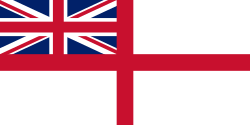Allocated by letter
Originally stationed at Malta took part in the Battle of Calabria [4] in 1940 it transferred Trincomalee and became the fast force of the Eastern Fleet during the Indian Ocean raid April to May 1942.
Originally stationed at Malta, took part in the Battle of Calabria on 9 July 1940, took part in the Battle of Cape Spartivento, 27 November 1940, was involved in the First Battle of Sirte, 17 December 1941 it then moved to Trincomalee in March 1942 and became the slow force, made up of R-class battleships, of the Eastern Fleet during the Indian Ocean raid April to May 1942.
Formed during the Battle of Calabria.
Stationed at Malta, took part in the Battle of Cape Spartivento, 27 November 1940.
Formed as part of a number of hunting task for groups 5 October 1939 as a prelude to Battle of the River Plate, 13 December 1939 was stationed at Malta, took part in the Battle of Cape Spartivento, 27 November 1940.
Formed as part of a number of hunting task groups on 5 October 1939 as a prelude to Battle of the River Plate, 13 December 1939.
Formed as part of a number of hunting task groups on 5 October 1939 as a prelude to Battle of the River Plate, 13 December 1939 and part of the South America Division after which it was stationed at, Gibraltar, took part in Operation Catapult, 3 July 1940, took part in Operation Rheinübung 19 May - 15 June 1941, took part in Operation Harpoon, took part in Operation Husky, 9 July-17 August 1942, also involved in Operation Torch as a component of a larger task force, 8–16 November 1942 the force was disbanded in September 1943.
Stationed at Ceylon, formed as part of a number of hunting task groups on 5 October 1939 as a prelude to Battle of the River Plate, 13 December 1939.
Covered North Atlantic, originally formed as part of a number of hunting task groups on 5 October 1939 as a prelude to Battle of the River Plate, 13 December 1939.
Part of a number of hunting task groups on 5 October 1939 as a prelude to Battle of the River Plate, 13 December 1939 based in Freetown it was then stationed at, Malta, took part in the Battle of the Tarigo Convoy, 16 April 1941, was involved in the First Battle of Sirte, 17 December 1941 then moved to Freetown in December 1941.
Stationed at, Freetown, was part of a number of hunting task groups on 5 October 1939 as a prelude to Battle of the River Plate, 13 December 1939, took part in the Battle of Dakar, 23–25 September 1940.
Formed at Freetown and placed under the Command of Vice-Admiral John D. Cunningham, it was assembled using available naval units from the Home Fleet and Force H and took part in the Battle of Dakar code-named 'Operation Menace'.
Formed at the same time as Force S in October 1943 to prepare for the D-Day landings.
A sub-component of a larger covering force escorting Convoy PQ 13 20 March - 1 April 1942 was involved in the Battle of Skerki Bank, 2 December 1942.
Formed at Murmansk and was involved at Battle of the Barents Sea and the Attack on Convoy JW 51B, 31 December 1942.
Headquartered at Cameron Barracks, Inverness on 11 October 1943 to plan and prepare for the D-Day landings and led by Vice-Admiral Arthur Talbot.
Originally formed at, Pernambuco-Dakar, transferred to the Mediterranean and took part in Operation Harpoon, 12–15 June 1942, also was involved in the Attack on Mers-el-Kébir, 3 July 1940.
Operational area was originally in the West Indies, was part of a number of hunting task groups on 5 October 1939 as a prelude to Battle of the River Plate, 13 December 1939, transferred to West Africa and was later allocated to the French component force during the Battle of Dakar, 23–25 September 1940.
Stationed at Singapore, known for the destruction of its two capital ships in the Sinking of Prince of Wales and Repulse.
